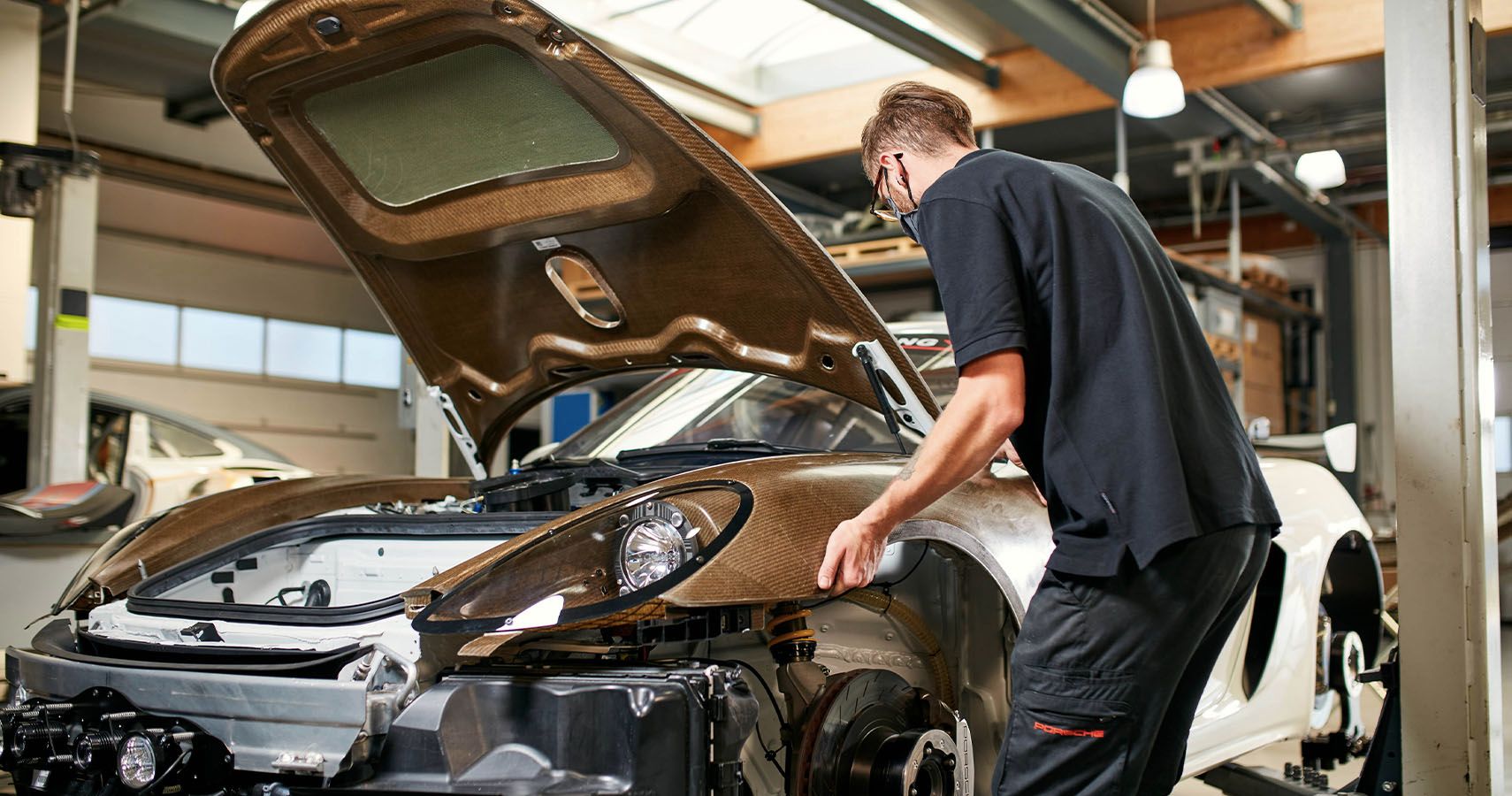Even as carbon fiber trim pieces have begun populating the interior of commuter cars today, the miracle material continues to be developed into a stronger, lighter material for use in sports cars and motorsport racing applications, the industry has already begun moving in new directions. Carbon fiber-bodied muscle cars might soon be on their way out, it seems. Porsche, a company long at the forefront of lightweight performance, recently unveiled the entirely carbon fiber exterior of the track-only 935 revival and now, the German automaker has developed a new form of composite material that's entirely natural and renewable — while still remaining strong enough to make up the entire exterior of a 718 Cayman GT4 Clubsport MR headed to this year's 24 Hours of Nürburgring endurance race.
Built With New Materials
Porsche began developing the new material back in 2016 with a partnership between the Federal Ministry of Food and Agriculture in Germany, the Fraunhofer WKI, and a Swiss company called Bcomp. Construction includes farmed flax fibers, balsa wood, and resin transfer molding. Critically, a vacuum infusion process and specific fiber orientation allow for enhanced load-bearing designs, a five-fold reduction in vibration, and also safer shards and splinters than carbon fiber should an accident take place.
Real-World Applications
By 2019, Porsche had built solid enough surfaces to replace two doors and the rear wing of a racecar, though the new version set for its 2020 debut will use regenerative materials for everything from the front and rear aprons to the spoilers, lids, mudguards, and the rear diffuser. While the exterior will receive the groundbreaking construction, the 718 Cayman GT4 MR will still be powered by the same 3.8-liter flat-six engine mounted amidships — the car's weight will remain largely unchanged, though Porsche points out that the new composites can be manufactured more economically than carbon while also using less energy.
Sources: newsroom.porsche.com and nuerburgring.de.



